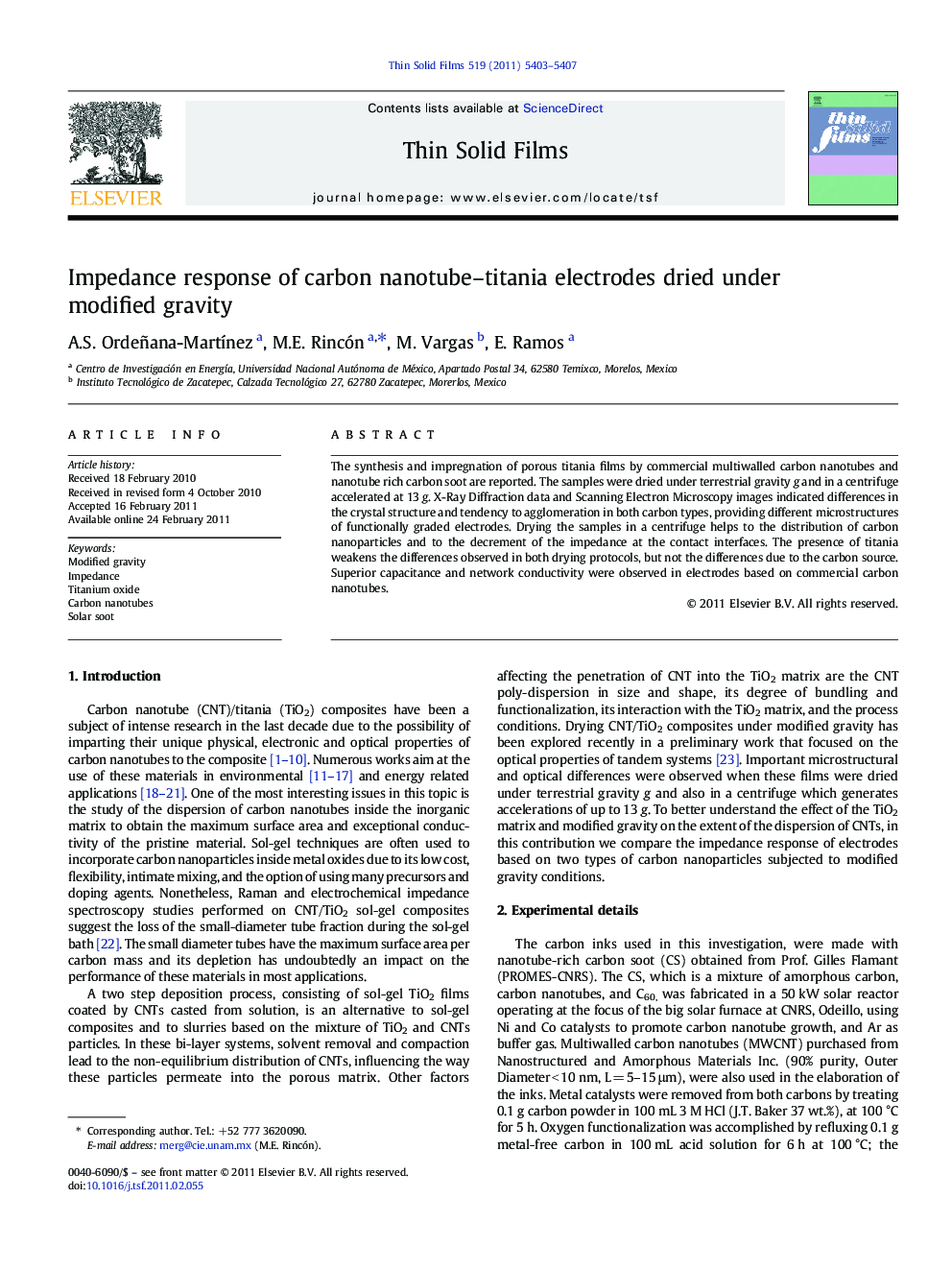| Article ID | Journal | Published Year | Pages | File Type |
|---|---|---|---|---|
| 10670152 | Thin Solid Films | 2011 | 5 Pages |
Abstract
The synthesis and impregnation of porous titania films by commercial multiwalled carbon nanotubes and nanotube rich carbon soot are reported. The samples were dried under terrestrial gravity g and in a centrifuge accelerated at 13Â g. X-Ray Diffraction data and Scanning Electron Microscopy images indicated differences in the crystal structure and tendency to agglomeration in both carbon types, providing different microstructures of functionally graded electrodes. Drying the samples in a centrifuge helps to the distribution of carbon nanoparticles and to the decrement of the impedance at the contact interfaces. The presence of titania weakens the differences observed in both drying protocols, but not the differences due to the carbon source. Superior capacitance and network conductivity were observed in electrodes based on commercial carbon nanotubes.
Related Topics
Physical Sciences and Engineering
Materials Science
Nanotechnology
Authors
A.S. Ordeñana-MartÃnez, M.E. Rincón, M. Vargas, E. Ramos,
